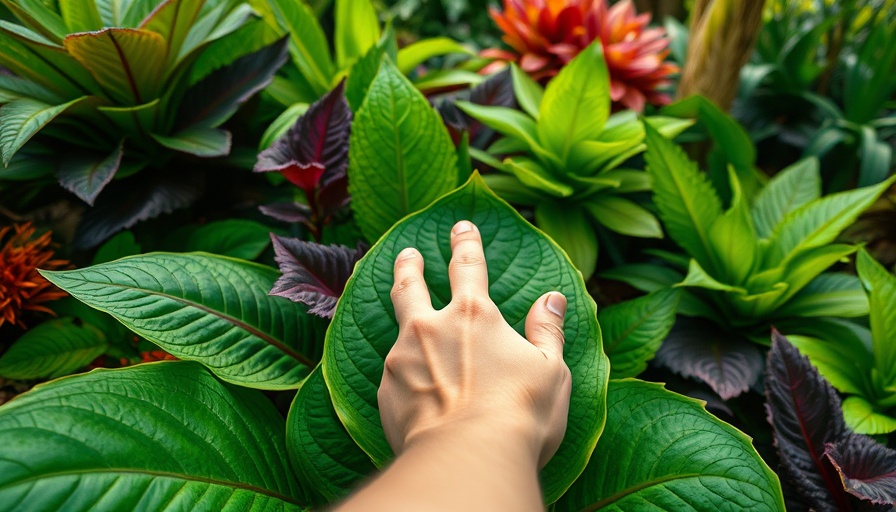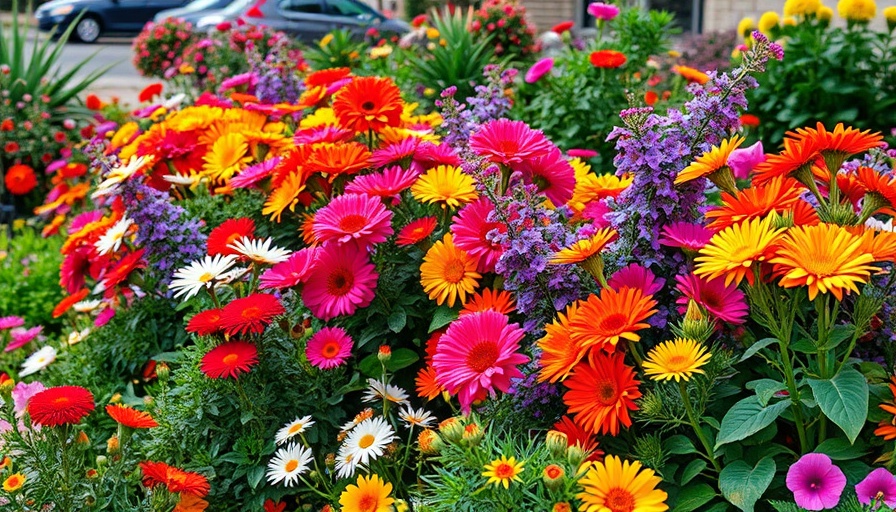
Transforming the Untold Corners of Your Garden
Gardening enthusiasts often brag about the sun-drenched zones of their landscape where vibrant flowers bloom and vegetables thrive. However, what about those overlooked corners—the shady spots—where everything seems to struggle? As highlighted in the video 'Perfect Plants For Shady Gardens,' addressing these dark areas can turn a neglected section of your yard into a flourishing oasis. Let's explore how the right plants and techniques can revitalize these spaces.
In 'Perfect Plants For Shady Gardens,' the discussion dives into revitalizing neglected areas in gardens, exploring key insights that sparked deeper analysis on our end.
Mastering Dry Shade: The Hidden Challenges
Shady gardens often suffer from compaction and hydrophobic soil due to large trees drawing moisture. Such was the case in the video, where a liquid amber and magnolia tree left the ground dry and lifeless. To combat these issues, using a soil wetter can break down the crusty layers and allow for better water infiltration when mixed with compost and garden soil. This preparation sets the stage for a diverse array of plants that can thrive where others have failed.
Choosing the Right Plants for Your Shady Garden
Sustainability begins with selecting the proper plants. As mentioned in the video, plectranthus varieties, like Mona Lavender, not only bring vibrant colors to the garden but also thrive in dry shade conditions. They can be easily propagated, ensuring a lush look without heavy investment. Similarly, hellebores or winter roses can flower in the colder months, adding visual interest when most other blooms have gone dormant. Cyclamen, a beloved woodland plant, fits in perfectly alongside these during the transition to spring.
Designing for Color and Texture
The video emphasizes the importance of visual connection in garden design. By interspersing contrasting colors—yellow from the claves and purple from the plectranthus—gardeners can create a cohesive look. Utilizing textures, such as the busyness of ferns against the smoothness of leaf edges, can also help keep the eye engaged as paths wind through the vibrant foliage.
The Essential Role of Mulching
Mulching not only conserves moisture but also enhances the soil's appearance over time. Choosing a bush mulch, as demonstrated in the video, which is a mix of wood chips and leaves, allows for a natural look as foliage falls without clashing with the backdrop. This approach maintains a neat aesthetic while providing essential nutrients back to the soil.
Building Your Compost: The Heart of Sustainable Gardening
Creating compost is a game-changer for any gardening endeavor. The video outlines clear steps to develop a three-bay compost system, allowing for efficient decomposition of organic waste. The balance of brown (like leaves) and green materials (like kitchen scraps) ensures quality digested compost that will enrich any soil. Importantly, turning the compost every few weeks aerates it, speeding up the process and invigorating your gardening efforts.
Beyond the Basics: Gardening as a Community Connection
While the focus is on practical gardening tips, the broader impact is often overlooked. Urban gardening, community gardens, and local alliances formed around such projects can foster a strong sense of belonging and health within neighborhoods. By transforming your garden, not just for personal satisfaction but as part of a collective transformation, the impact becomes multi-generational and communal.
Final Thoughts: Embrace Your Garden's Potential
Gardening isn’t merely a hobby; it fosters connection between nature and the community. By focusing on those neglected, shady areas and enhancing them with the right techniques, materials, and teamwork, we can uncover the true potential of our gardens. The insights from 'Perfect Plants For Shady Gardens' provide motivation for tackling these usually overlooked spots. So, gather your supplies, embrace your creativity, and get ready to cultivate not just your garden but your neighborhood's shared beauty.
Ready to dive deeper into gardening? Explore more sustainable gardening practices today!
 Add Row
Add Row  Add
Add 




Write A Comment